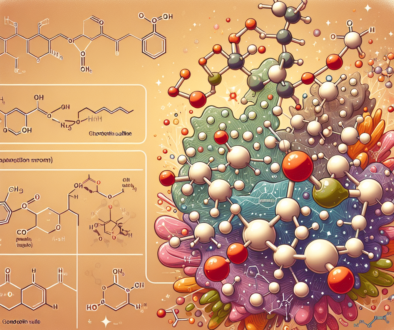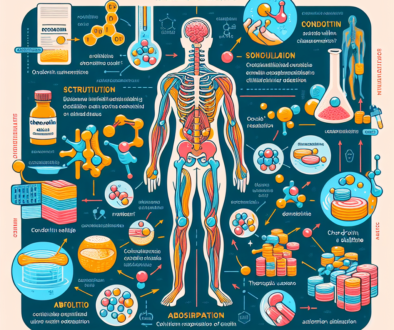Gcm to Mnm: Conversion Guide
-
Table of Contents
- GCM to MNM Conversion: A Comprehensive Guide
- Understanding GCM and MNM
- What is GCM (Grams per Cubic Meter)?
- What is MNM (Millinewtons per Meter)?
- Conversion Basics: From GCM to MNM
- Understanding the Context of Conversion
- Case Studies and Examples
- Calculating Surface Tension from Density
- Using the Young-Laplace Equation
- Practical Application in Industry
- Statistical Relevance and Accuracy
- Importance of Precision in Measurements
- Statistical Tools for Ensuring Accuracy
- Conclusion: Key Takeaways from GCM to MNM Conversion
- Discover ETChem’s Protein Products
GCM to MNM Conversion: A Comprehensive Guide

Understanding the conversion between different units of measurement is crucial in various scientific, engineering, and industrial contexts. In this article, we will explore the conversion from grams per cubic meter (g/cm³) to millinewtons per meter (mN/m), which is particularly relevant in fields such as materials science and surface science. We will provide a detailed guide on how to perform this conversion, along with examples and case studies to illustrate its practical applications.
Understanding GCM and MNM
Before diving into the conversion process, it’s important to understand what each unit of measurement represents.
What is GCM (Grams per Cubic Meter)?
Grams per cubic meter (g/cm³) is a unit of density, which measures the mass of a substance per unit volume. It is commonly used in chemistry and physics to describe the concentration of a substance in a given space.
What is MNM (Millinewtons per Meter)?
Millinewtons per meter (mN/m) is a unit of surface or interfacial tension. It quantifies the force per unit length required to break a film of liquid or to stretch an interface between two fluids. This measurement is significant in the study of phenomena such as capillarity, wetting, and emulsion stability.
Conversion Basics: From GCM to MNM
To convert g/cm³ to mN/m, one must understand the relationship between density and surface tension. While there is no direct conversion formula, the process typically involves understanding the context in which these units are used and applying principles from fluid dynamics or material science.
Understanding the Context of Conversion
It’s important to note that density and surface tension are fundamentally different physical properties. Density is a scalar quantity, while surface tension is a force per unit length. Therefore, a direct conversion is not possible without additional information about the substance or context in which these measurements are being applied.
Case Studies and Examples
Let’s consider a practical example where such a conversion might be necessary. In the production of foams or emulsions, the density of the dispersed phase and the surface tension at the interface are critical factors. To optimize the formulation, a scientist might need to relate the density of a substance to the force required to create an emulsion droplet of a certain size.
- Example 1: Foam Production
- Example 2: Emulsion Stability Analysis
Calculating Surface Tension from Density
While a direct conversion is not possible, one can calculate surface tension from density by considering additional parameters such as the size of droplets in an emulsion or the curvature of a liquid interface. The Young-Laplace equation, for instance, relates the pressure difference across a curved interface to surface tension and curvature.
Using the Young-Laplace Equation
The Young-Laplace equation is given by:
[ Delta P = gamma (frac{1}{R_1} + frac{1}{R_2}) ]
where (Delta P) is the pressure difference, (gamma) is the surface tension, and (R_1) and (R_2) are the radii of curvature of the interface.
Practical Application in Industry
In industries such as pharmaceuticals or cosmetics, understanding the relationship between density and surface tension can lead to better product formulations. For example, in the production of pills, the surface tension of the coating solution can affect the uniformity and strength of the coating, which in turn can be influenced by the density of the solution.
Statistical Relevance and Accuracy
When performing conversions or calculations involving g/cm³ and mN/m, it’s important to consider the accuracy and precision of the measurements. Statistical analysis can help in determining the reliability of the conversion in a given context.
Importance of Precision in Measurements
Precision in measurements is crucial, especially in high-stakes industries like aerospace or medical devices, where material properties must be known with a high degree of certainty.
Statistical Tools for Ensuring Accuracy
Statistical tools such as standard deviation, confidence intervals, and regression analysis can be used to ensure the accuracy of conversions and to predict the behavior of materials under different conditions.
Conclusion: Key Takeaways from GCM to MNM Conversion
In conclusion, while there is no direct conversion formula from g/cm³ to mN/m, understanding the relationship between density and surface tension is essential in many scientific and industrial applications. By considering additional parameters and using equations like the Young-Laplace equation, one can relate these two properties in a meaningful way. Precision and statistical analysis play a vital role in ensuring the accuracy of these conversions.
Discover ETChem’s Protein Products
If you’re in the market for high-quality protein products, ETChem offers an extensive range of collagen products suitable for various industries. Their offerings include marine, fish, bovine, chicken, and different types of collagen, all characterized by neutral taste and instant solubility. Whether you’re in nutraceuticals, pharmaceuticals, cosmeceuticals, or food and beverage, ETChem has the protein solutions you need.
About ETChem:
ETChem, a reputable Chinese Collagen factory manufacturer and supplier, is renowned for producing, stocking, exporting, and delivering the highest quality collagens. They include marine collagen, fish collagen, bovine collagen, chicken collagen, type I collagen, type II collagen and type III collagen etc. Their offerings, characterized by a neutral taste, instant solubility attributes, cater to a diverse range of industries. They serve nutraceutical, pharmaceutical, cosmeceutical, veterinary, as well as food and beverage finished product distributors, traders, and manufacturers across Europe, USA, Canada, Australia, Thailand, Japan, Korea, Brazil, and Chile, among others.
ETChem specialization includes exporting and delivering tailor-made collagen powder and finished collagen nutritional supplements. Their extensive product range covers sectors like Food and Beverage, Sports Nutrition, Weight Management, Dietary Supplements, Health and Wellness Products, ensuring comprehensive solutions to meet all your protein needs.
As a trusted company by leading global food and beverage brands and Fortune 500 companies, ETChem reinforces China’s reputation in the global arena. For more information or to sample their products, please contact them and email karen(at)et-chem.com today.




